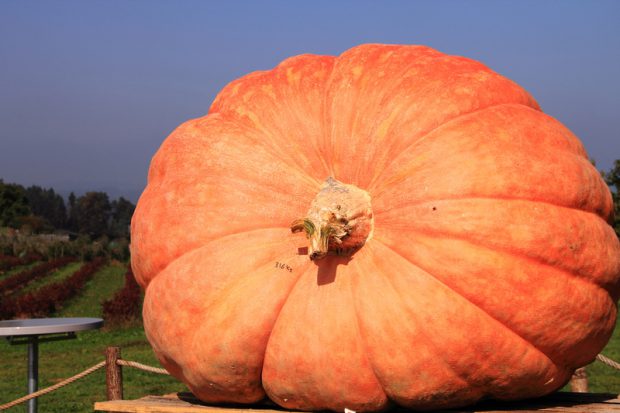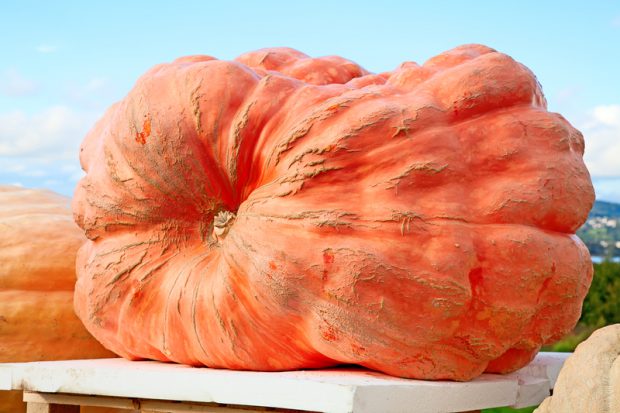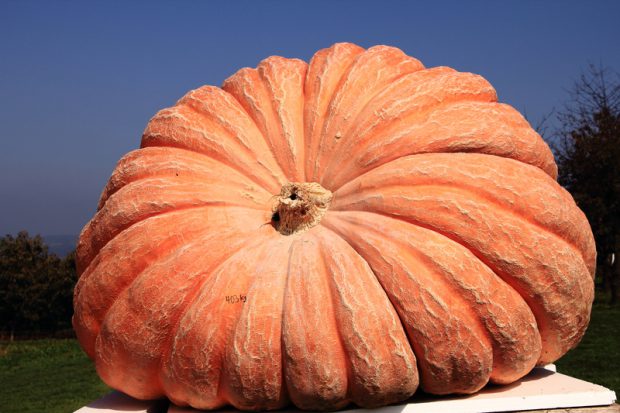How to grow a giant pumpkin

Photo: Dreamstime
If you’ve ever wondered how people win pumpkin-growing competitions, get ready for some seriously strange gardening.
Words: Nadene Hall
These tips and tricks come from amateur experts in the USA, the champions of giant pumpkin growing.
You will need (preferably):
• Pumpkin seed “Atlantic Giant” (NZ record 789.5kg, average 180-230kg), available from garden centres
• Seed pots (to start your seedlings off) in a warm spot (ie the kitchen window)
• Soil temperature 18°C or above
• A deep, loamy, well-drained soil, with well-rotted manure and compost dug in, in a sunny position, protected from wind
• Frost protection (cloche, cold frame) if needed
• Fertiliser (preferably liquid fertiliser)
• Water (and lots of it)
Start your seedlings off in a warm spot, especially if you get spring frosts. Use a good quality seedling mix and make sure you feed them well.
You can’t let the young plant get frosted, but getting it into your prepared bed is also important. You can build up a mound (about 10cm high) and plant it out in September (or earlier if you’re confident of soil temperature, over 18°C ), but it will probably need some sort of cover for frost-protection.
In the USA, to get the world record-size pumpkins using “Atlantic Giant”, competitors there use heating coils in the mound and create a special cloche, to make sure the soil stays above 18°C and the plant is protected.
Keep your seedling well watered but not water-logged. The experts recommend starting off feeding with a fertiliser than is high in phosphorous (for root growth), then gradually shift to a more balanced fertiliser with higher nitrogen, then – just prior to fruit set – use a higher potassium formulation. The plant will grow for around 60 days.

Photo: Dreamstime
As the vine grows, cover it with soil; this will encourage the vine to grow out further – giant pumpkin growers have found the biggest pumpkins tend to grow about 3m from the main tap root. The best pumpkin plants have large number of leaves (some say the optimum is 800 leaves) to pump energy through the vine and into your chosen pumpkin.
When flowers start appearing, you want to find the perfect female flower. Males are a long stem, then a flower. Females are a stem, then the small pumpkin shape, then the flower. The perfect female will have a stem that is at 90° to the vine (meaning maximum feed can flow as it gets bigger and the vine has to move to accommodate its size). To be absolutely sure of pollination, use a brush inside the male flower, then “paint” the female. Once you’re sure pollination is complete, remove all but the 4-5 best-looking female flowers. Measure them each day and make your choice based on growth rates.
Once you have picked your winners (it’s recommended you have a couple of plants so you can hedge your bets) remove the other pumpkins, and very carefully move your chosen one so there is some slack in the vine (make a U shape in it) – this is so as the pumpkin grows, it’s not going to stretch the vine and risk damaging, or worse, breaking, the connection between vine and pumpkin.

Photo: Dreamstime
If you experience a dry summer then you need to water your pumpkin every day. Continue feeding a liquid fertiliser, with an emphasis on slowly increasing the potassium levels as it grows. Don’t water or fertilise overhead, or you can cause downey mildew.
When your pumpkin gets to about basketball size, you may start to get stem stress, as the vine will be stretching over the shoulders of the pumpkin. You may need to cut off side tap roots so the main feeding vine can rise off the ground as the pumpkin grows; you may even need to move the pumpkin to keep it perpendicular to the vine. This is an incredibly delicate process that may take a week and is very dangerous as the connection can easily break. Be careful and very, very slow in every move you make – there will be no warning of a break, just one final snap.
One final tip – keep the pumpkin (not the plant) under shade; this helps prevent splits forming, to give you a great-looking pumpkin, as well as a big one!
There is an increasing number of giant pumpkin competitions on around NZ, held in April.

